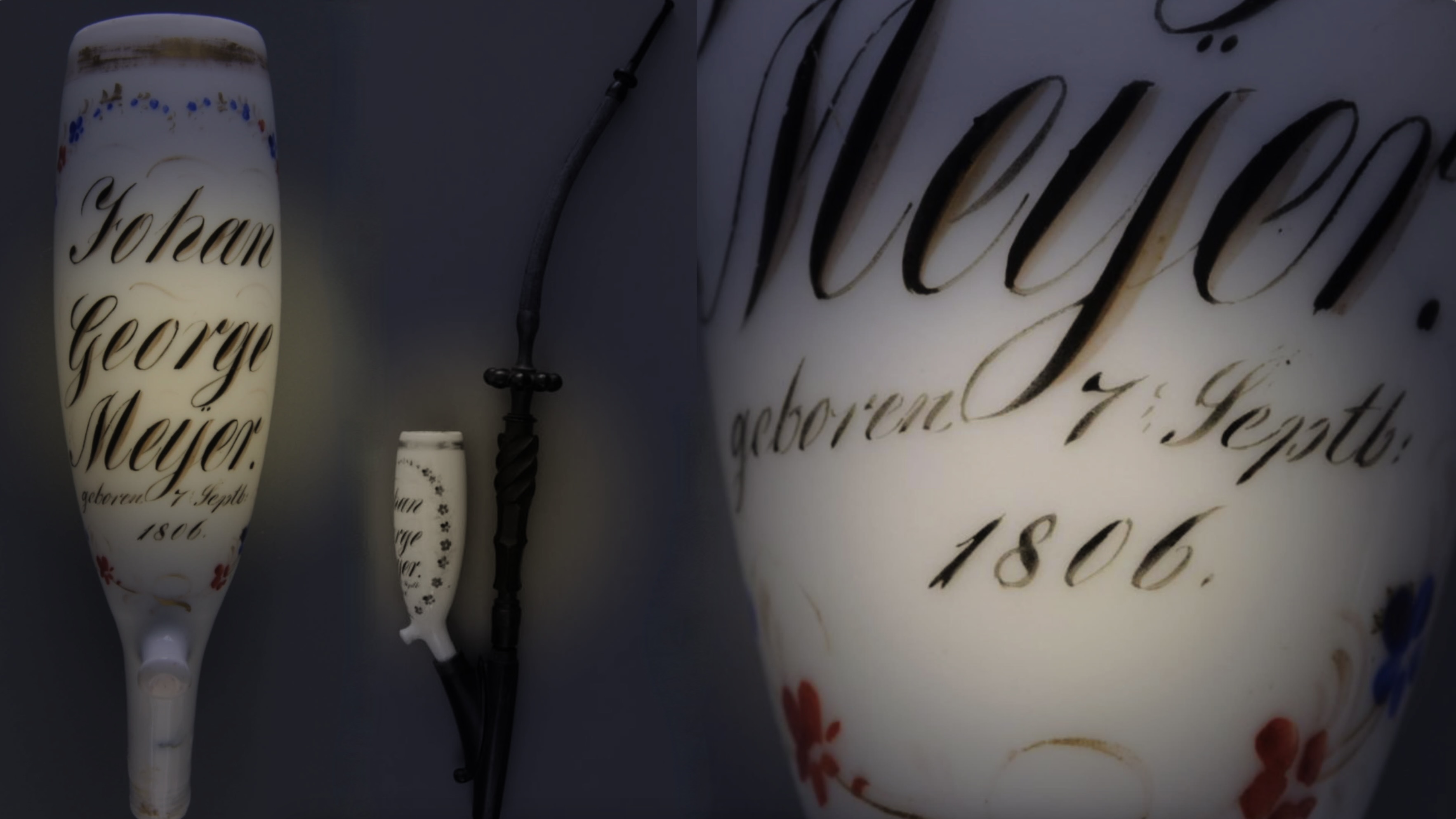
Palace, Amsterdam Dam 1990 - Hein Hof played the Meincke & Pieter Meijer 1809 piano - Hans Meijer played his newly restored painted French guitar. 
DOWNLOAD
ALBUM ARTISTIQUE DE LA REINE HORTENSE
ROMANCES DE LA REINE HORTENSE
Hortense - Rijksmuseum
FOUNDATION MUSICK'S MONUMENT
The reason for establishing the Stichting Musick's Monument was the discovery of the ALBUM ARTISTIQUE DE LA REINE HORTENSE in the Royal Archives in 1990.
In 1990, I, Hans Meijer, was asked to tune the 1809 Meincke & Pieter Meijer piano and to organise recitals when the Palace on Dam Square opened on Wednesday afternoons. The grand piano was made for La Reine Hortense, first Queen of Holland. While looking at the instrument, I noticed that there was a brand mark under the piano. This brand mark indicates the room where the instrument stood in the Palace. To gather information about the instrument, an appointment was made at the Royal Archives. Hein Hof, organist and musicologist, took me along for this visit.
After five minutes, the archivist gave the Album Artistique for perusal. The lithographs are after drawings by Hortense herself, as is the music. Hortense's son NAPOLEON III had the book printed as a tribute to his mother. The archivist made copies to carry out the works. The visit was completed faster than expected so we decided to pay another visit to the Gemeentemuseum in The Hague.
On the hall of Hortense's Erard piano, I took a quick look under the grand piano to see if there was a burn mark under it. Clearly there was a burn mark to be seen.
At the next playing at the Palace, I reported on my visit. To my surprise, Hortense's grand piano, belonging to the Palace's collection, turned out to be unknown to the conservator. Naturally, they wanted the grand piano back in their collection! I had also made a report on the defects in the Meincke & Pieter Meijer piano.
A solution must have been sought between the Gemeentemuseum, Paleis op de Dam and Rijksmuseum where the grand piano could best be kept. This also brought the Hortense project to a halt therefore it was decided to realise it in-house.
Apparently, it was decided that the Rijksmuseum would be allowed to exhibit the piano, where it can now be admired.

Erard-Rijksmuseum
In 1992, the Musick's Monument Foundation was set up to bring out special music on CD. Hortense was our first project.
The beautiful score of the Album Artistique also deserved a release. As an ANBI Foundation, everyone should be able to take note of it so, when digitisation was in its infancy, it was made public as a download even then. Meanwhile, the writer Thera Coppens, inspired by our first Hortense CD, had contacted the Musick's Monument Foundation. The book on Hortense, the vergeten Koningin van Holland was the result. Our first video of Hortense's music was seen by the director of Paleis het Loo, who decided to use it in an exhibition about Louis Napoleon the brother of Napoleon Bonaparte.
Not long after, we realised the Hortense video’s in the KUNSTZAAL of Paleis het Loo. Hortense's castle Arenenberg in Switzerland was also realised on video. The Palace doors of the Palace on Dam Square also reopened with a video of Bellini and Schubert. Meanwhile, the piano had been neatly restored and held tune.
Dr Annelies Andries wrote in 2022:
The romances of Hortense de Beauharnais: Music, melancholy and nostalgia in times of war and exile.
De romances van Hortense de Beauharnais: Muziek, melancholie en nostalgie in tijden van oorlog en verbanning
However, the Hortense project suddenly takes an unusual turn when Hans Meijer turns out to have the DNA of the Dulcken's harpsichord & fortepiano builders.
Louis Dulcken built instruments for Charles Philip Theodore and Maximilian I Joseph and for Empress Joséphine Bonaparte. Shortly after the Battle of Austerlitz 1805, Emperor Napoleon appointed Eugène de Beauharnais as husband to Princess Augusta Amalia of Bavaria, daughter of the brand-new King Maximilian I Joseph.
In the Dulcken project we want to realize the following:
Paula Bär-Giese will play on a Louis Dulcken piano music by the mother (Francesca Lebrun-Danzi) of his wife Sophie Lebrun. Songs by her uncle Ferdinand Danzi.


Piano Sonata Opus 3 by Franz Danzi. The second movement Variations was composed by Franz Danzi's wife, Margarethe Marchand.

Margarethe Marchand
Little is known about the composer, pianist, and singer Margarethe Danzi. Her social and historical background furnish as much detail of her life as direct record. She was born as Margarethe Marchand in 1768 in Frankfurt am Main, the daughter of the well-known singer, actor and theatre director Theobald Hilarius Marchand and the actress Magdalena Brochard. From an early age Margarethe was a popular performer and well-loved by audiences; she played children’s roles in the theatre and performed as both singer and pianist. She was given voice lessons in Munich by Franziska Lebrun, the sister of Franz Danzi, the man she would later marry.
She spent an important part of her musical education studying in Salzburg with Leopold Mozart, at whose house she lived between 1782 and 1784, together with her brother, the violinist Heinrich Marchand. Although we know relatively little about Margarethe, her connection with Leopold Mozart gives us important insights into the quality of her musical development. As a pedagogue Leopold Mozart played an essential role in the musical education and development of his son, Wolfgang Amadeus, as well as authoring the Violinschule that even today remains a standard in the violin pedagogic repertoire. Margarethe (who was also called Gretl or Gredl) and her brother Heinrich appear regularly in the diaries and letters of the Mozart family. It is touching to realise that we can get to know Margarethe through the eyes of the Mozart family and that we, through Margarethe, can get a glimpse into the intimate family life of the Mozarts.
In 1790, Margarethe married Franz Danzi, a conductor and composer. Together they toured Europe. Margarethe was the prima donna of the Domenico Guardasonis theater group of which the couple was a part. After 1796, Margarethe was also prima donna at the Court Theater of Munich. She died at Munich of lung disease June 11, 1800.

Theobald Marchand (1741-1800)
Theobald Marchand was a pioneer in the performance of French light operas in German translations. After having worked for several years in Sebastini’s Troupe, Marchand became the leader of this travelling company, achieving success in major cities such as Mannheim, Mainz and Frankfurt. His productions of plays and operettas became widely popular, eventually overshadowing the prevailing preference for French theatre. Churfürst Karl Theodor of Mannheim was one of the first German electors who dared turn his back on the French theatre and, in this spirit of renewal, he hired Marchand and his troupe in 1776. The entire troupe, which later moved with him to Munich, included many prominent actors and singers, among them Marchand’s future wife, Magdalena Brochard.
As late as 1811 Theobald Marchand’s interpretation of the gardener in Mozart’s Figaro was praised in the Baierische Musik-Lexikon. Not the least of Marchand’s claims to fame was the fact that Goethe owed his introduction to and his love of French opera to the many performances he heard this company give. He described Marchand warmly in his autobiography Dichtung und Wahrheit (part IV, published in 1833). Theobald Marchand is already mentioned in 1777 in the Mozart family correspondence. It is known that Wolfgang and Theobald met each other in Mannheim in 1777-8. The Marchand family was also acquainted with the Weber family, including their daughter Aloysia, one of Wolfgang’s great loves, and her sister Constanze, who later became his wife. Both families moved from Mannheim to Munich. In 1780 Wolfgang and Theobald met again during the preparations for Idomeneo, the premiere of which took place in 1781 in Munich. A still closer bond developed when Leopold and Nannerl, Wolfgang’s sister, took Marchand’s son Heinrich back to Salzburg with them. The boy stayed with the Mozart family from 1781 until 1784. In February 1782, after a visit to Munich, Heinrich’s sister Margarethe also came to stay. From the time that the Marchand children came to live with the Mozart family, a close friendship developed between the now widowed Leopold and the children’s father, Theobald. Both men were members of the same Freemason’s lodge and, after his daughter and students left his home, Leopold paid several visits to Theobald Marchand. This contact was one of the only links that kept Leopold connected with the outside world during his lonely final years. The last extant letter from Theobald to Leopold, dated 29 May, 1787, is full of concern over Leopold’s declining health and even included suggestions for medication with instructions for use. Unfortunately Leopold had already died on May 28th.

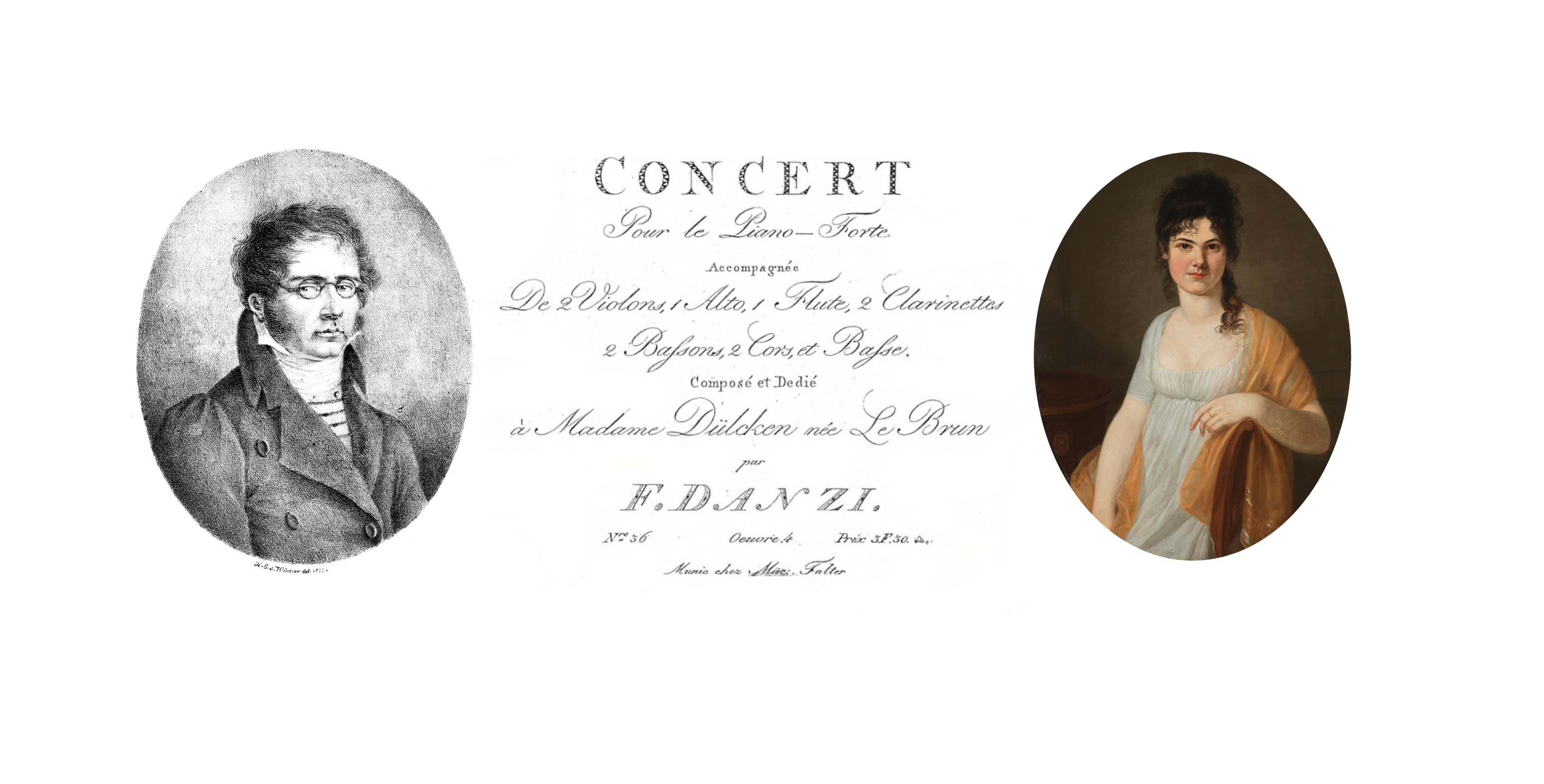
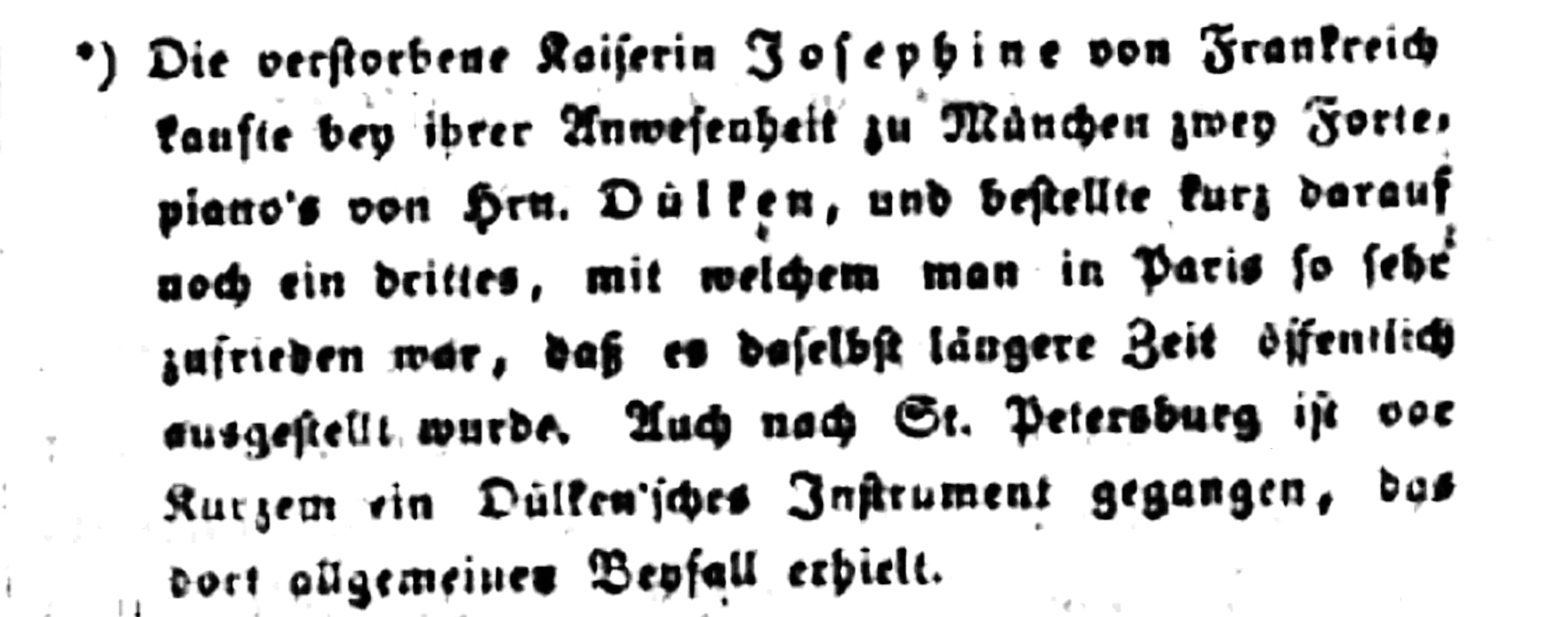
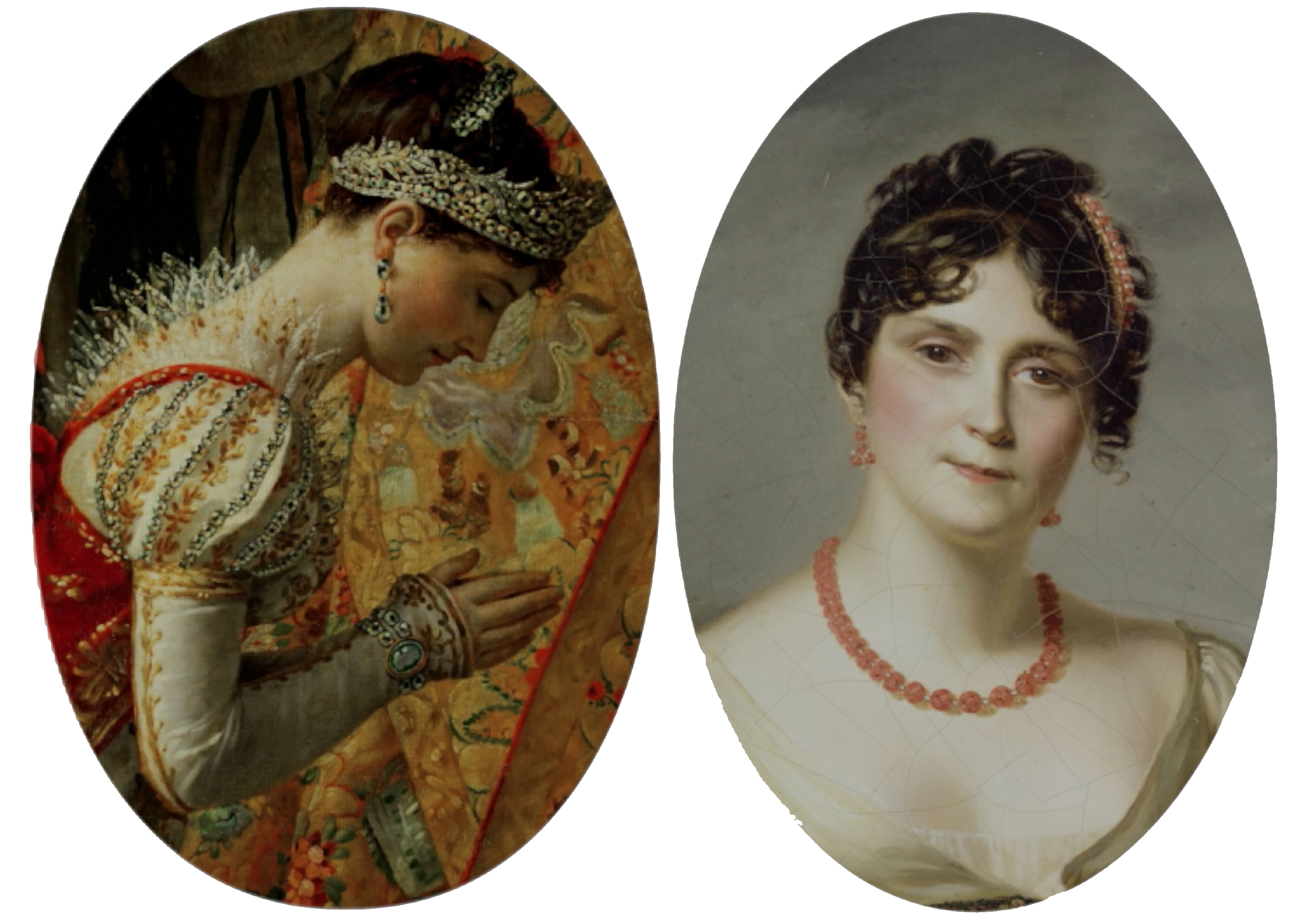
Empress Joséphine de Beauharnais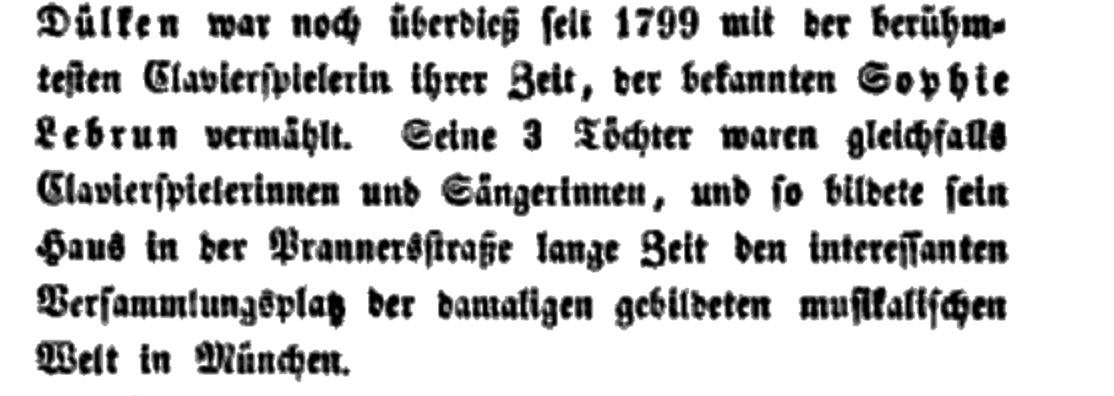
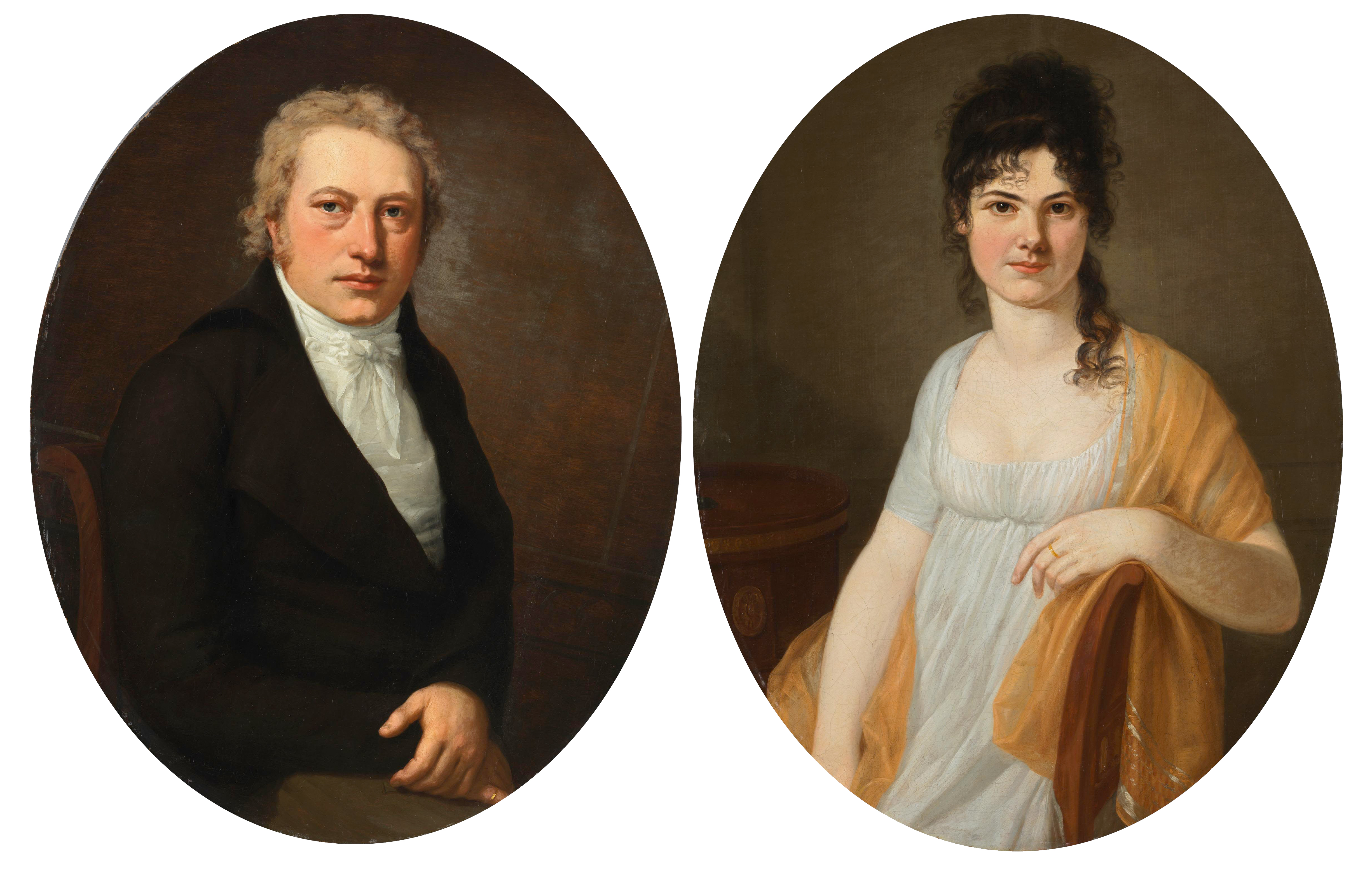
Louis & Sophie Dulcken
Charles Philippe Theodore (Brussels, 11 December 1724 - Slot Nymphenburg, 16 February 1799), scion of the house of Wittelsbach, was paltsgrave of Sulzbach (1733), became elector of the Palatinate, duke of Palatinate-Neuburg, Gulik and Berg, marquis of Bergen op Zoom, lord of Wijnendale and lord of Ravenstein on 31 December 1742. In 1777, he also became elector of Bavaria.
Charles Theodore initially resided in Mannheim, capital of the Palatinate. Between 1756 and 1773, he had a new summer residence built in rococo style; Benrath Castle. When he also became Elector of Bavaria in 1777, he moved his main residence to Munich. In the summer, he resided in Schwetzingen Castle, which had been built by his uncle Charles Philippe.

Maximiliaan I Jozef
Maximilian I Joseph
Max Joseph, as the son of Frederick Michael of Palatinate-Birkenfeld, descended from a tributary of the House of Wittelsbach, and was originally, as a younger son, not an heir to the throne. His mother was Maria Francisca of Palatinate-Sulzbach. He grew up in France, where - as a colonel, later as a major-general - he served in the army. At the outbreak of the French Revolution (1789), Maximilian swapped his service in the French army for a position in Austria's armed forces and participated in the first campaigns against revolutionary France.
In 1795, he succeeded his brother Charles II August, who had just as unexpectedly become Duke of Palatinate-Zweibrücken. After the death of Charles Theodore from the then extinct Sulzbach line, he also became elector of Bavaria. His opportunistic policy towards Napoleon earned him territorial expansion and earned him the king's title when he joined the Rhine League. He had already left the domestic administration to his equally French-minded minister Maximilian von Montgelas since 1799.
After Napoleon's disastrous campaign in Russia, Max Joseph sided with Austria in 1813 and joined the German Confederation in 1815. This alliance with the French emperor's enemies allowed him to retain his king's title at the Vienna conference. In 1818, he introduced a constitution. He was succeeded by his son Louis I after his death in 1825.

Eugène de Beauharnais & Augusta Amalia of Bavaria
Shortly after the Battle of Austerlitz, Emperor Napleon Bonaparte appointed Eugène husband to Princess Augusta Amalia of Bavaria, daughter of the brand-new King Maximilian I Joseph. Moreover, in 1807, he became Napoleon's official heir to the throne in Italy with the title prince of Venice.


Signatur:
„Louis Dulcken // Facteur de Piano de S. A. S. Elect. palat. Duc de Baviére // à Munic. // 1805“
Hammerflügel Louis Dulcken - München 1815
Greifenberger Institut für Musikinstrumentenkunde
Three pianos Louis Dulcken built for Empress Joséphine.
One baptismal act of Hans Meijer's ancestor Johan Casper Hendrik Meijer is still missing to prove that Johan Casper Hendrik Meijer is related to the Meincke & Pieter Meijer piano builders . Meincke & Pieter Meijer and their family originating from Hittfeldt under Hamburg built two pianos for the Royal Palace and one piano for Soestdijk.
‘Pianoforte Fabrikeurs of their Majesties’ LOUIS BONAPARTE & HORTENSE DE BEAUHARNAIS, the first King & Queen of Holland.
The cash book of the treasurer-general in the king's service records in March 1809 the payment to the Meijer brothers for the delivery of three fortepianos, two for the Amsterdam palace ( summa 2,200) and one for the ‘chateau de Zoestdijk’ (summa 450).

Royal Collections, The Hague, Fragment archives of the Civil House of King Louis Napoleon, inventory number G004-C-14
DULCKEN-MEIJER project
Johan Casper Hendrik Meijer was born in Eißendorf in ‘t Hannover in 1771. Occupation Blacksmith. In 1771, Eißendorf belonged to the Lutheran parish of Sinstorf.
Hilmer Meijer werd in Hittfeldt was born in Hittfeldt in ‘t Hannover in 1772. Occupation piano builder.
Both men, Hersteld Luthers, married almost simultaneously in Amsterdam to women residing at the address Bloemstraat and Bloemgracht in Amsterdam.
The distance between Eißendorf and Hittfeldt in ‘t Hannover is 9 km. The distance from Hittfeldt to Sinstorf is 2.7 km In 1771, Eißendorf belonged to the Lutheran parish of Sinstorf….
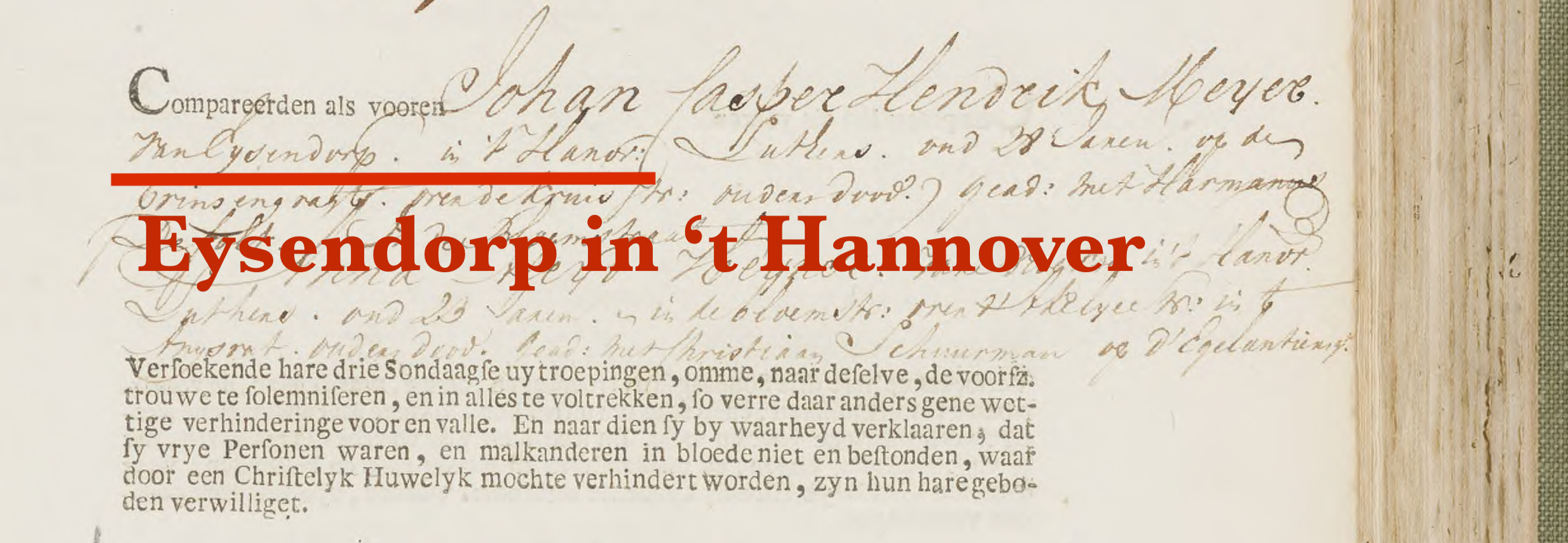
II - The Musick’s Monument Meincke & Pieter Meijer project

"JOHAN GEORGE MEYER born 7 Septb. 1806’.
Tobacco pipe of porcelain with stummel bowl, knob heel and straight inset stem with incisions. Bowl front hand-painted within a floral wreath ‘JOHAN GEORGE MEYER born 7 SEPTB. 1806’. Filt band in gold leaf. Stem mark in underglaze blue. Original buffalo horn pocket and helm with gafaceted buttons, tordering, ring and green limp.
.
amsterdam pipeMUSEUM
The brothers Meincke and Pieter Meyer are early piano builders in Amsterdam whose instruments have survived. Their year of birth and death are not known. Meincke worked in London before 1779 as an associate of the famous Saxon-born Johannes Zumpe. Zumpe had set up his own workshop there in 1761. that proved to have been a hit. After the better circles in London had accepted the little unknown instrument, demand grew to such an extent that one could speak of an explosive development. Zumpe was able to attract several collaborators, such as Meincke Meijer. Two pianos, from 1776 and 1778, recall their collaboration.
No doubt Zumpe will have tried to expand his sales area, especially to the Netherlands. Meincke must have known about the growing demand in Amsterdam, because in 1779 he announced by advertisement that he had established himself in partnership with his brother Pieter.

Amst. Crt., den 10 Juny 1779.

MEINCKE MEYER, geweezene Compagnon van JOHANNES ZUMPI, beroemde Muziek-Instrumentenmaker tot Londen, neemt de vrijheid, lieden van Distinctie en verdere Kenners der Muziek te berigten, dat hy zig te Amsterdam gestabileerd heeft, in Compagnieschap met zyn Broeder PIETER MEYER, tot voortzetten van dezelfde Affaires, in ‘t maaken van allerhande soorten van FORTEPIANO INSTRUMENTEN, door hem veel verbeterd, en verre overtreffende alle andere tot nog toe bekend; zy verzoeken ieders Gunst en Recommandatie. Hunne Woonplaats is op de Kolk, op den hoek van de Voorburgwal, by de Brug, te Amsterdam.
MEINCKE MEYER, former partner of JOHANNES ZUMPI, famous maker of musical instruments in London, takes the liberty to inform people of distinction and other connoisseurs of music, that he has established himself in Amsterdam, in partnership with his brother PIETER MEYER, to continue the same business, in making all kinds of FORTEPIANO INSTRUMENTS, much improved by him, and far exceeding all others known so far; they request everyone's favour and recommendation. Their place of residence is on the Kolk, on the corner of Voorburgwal, by the Brug, in Amsterdam.

Johann Christian Bach publicly played a Zumpe instrument and possibly acted as a sales agent for Zumpe pianos
Johann Christian Bach 1735-1782
Sonate G-Dur - Allegro & Tempo di Menuetto
Bij de pianobouwers Meyer zijn duidelijk twee generaties te onderscheiden.
De oudere generatie is ca 1735-1745 geboren. Hiertoe behoren
I - Meincke Meyer
II - Pieter Meyer
III - Joachim Andreas Meyer ( Vader van Hilmer Meyer en Andreas)
IV - Hendrik Anthonie Meyer (1745- †1812)

Civil marriage - Act Granted to marry from Engelskerk
The death certificate, signed in Amsterdam on 20 June 1812 states:
‘Hendrik Anthonie Meijer on the nineteenth of this month at Eight o'clock, in the evening old 67 years, living and deceased Kalverstraat no 192, Canton A, by profession organ and Forte Piano maker born at Linden in ‘t Hannover, married to Grietje Sonders , son of the late Hendrik Meijer’.
The first three are in any case brothers although this could not be verified by birth or baptismal registers.
Various family members worked as piano builders under the firm name Meincke & Pieter Meyer. It is not known how long after 1779 the firm was under the personal management of Meincke and Pieter Meyer. It is plausible that after about 1785, Meincke Andries, Jan Lodewijk and Hendrik Anthonie also worked in the business. The branch in Hamburg was founded by Pieter Meyer, but later completely taken over by Andreas Meyer. The younger generation (born after 1767) include:
V - Meincke Andries Meyer Meinecke (Michael) Andries (Andreas) Meyer (born: London 1767)
VI - Jan Lodewijk Meyer an Louis Meyer Jan (Johan) Louis Meyer (born: London 1772) John Ludowyk Meyer - John Ludwich Meyer - John Ludwig Meyer - John Ludwich Meyer
VII - Hilmer Meyer Hilmar Meyer (born Hittfeld: Januar 1773 - died: Amsterdam 20. August 1816)

Witnesses Andreas Meyer and the mother of Hilmer and Andreas: Magdalena Dorothea Lutmers
VIII - Andreas Meyer born 15 October 1775 in Hittfeld near Hamburg. Brother of Hilmer Meyer
Came to Hamburg in 1794 and received civil rights as a pianoforte maker in 1805. In the same year, he married Anna Metta Maria Kunstmann. From 1813 to 1850 he is listed in the Hamburg address books as the owner of a pianoforte factory (Neustädter Fuhlentwiete 121)/ Temporarily he had a certain Bohlmann and then his own son as an associate. Andreas died 21 August 1845 in Hamburg.
Joachim Andreas Meyer. Father of Hilmer and Andreas. He was married to Magdalena Dorothea Luttmer (Anna Dorothea Lüttner. She was born on 20 March 1738 in Hittfeld near Hamburg.
Whereas before 1779, pianofortes were made in single copies by builders of house organs, harpsichords and spinets, from that year onwards the Meyers concentrated exclusively on building pianos, and with success. Their instruments struck a chord with the people of Amsterdam. The Meincke & Pieter Meyer firm was regularly moved to a more favourable address for the business and developed into a piano factory, where servants found employment. In turn, the Meyers sought international outlets and a branch was opened in Hamburg. In Hamburg address books from 1796 the business is listed in Pieter's name; in the years 1803-1813 it is referred to as ‘M. & P. Meyer, Musikalische Instrumentenmacher, Grosse Bleichen 304.' Due to the expansion, it was possible, that several family members started helping out in Amsterdam. After 1800, several of them owned the business. An illustration of the Meyers' prominent place is the fact that for a while the firm held the designation “Piano forte Fabrikeurs van hunne Majesteiten”.
Various family members worked as piano builders under the firm name Meincke & Pieter Meyer. It is not known, how long after 1779 the company was under the personal management of Meincke and Pieter Meyer. It is plausible that after about 1785, Meincke Andries, Jan Lodewijk and Hendrik Anthonie also worked in the business. The branch in Hamburg was founded by Pieter Meyer, but later completely taken over by Andreas Meyer.
dr Clemens Chr. J. Von Gleich/Hans Meijer
 Foundation Musick's Monument
Foundation Musick's Monument

